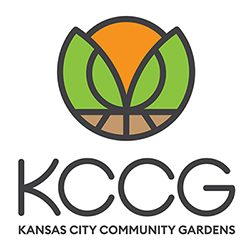While the winter weather is keeping us indoors and away from our gardens, it’s not too early to begin thinking about what makes our plants grow. The following activity and discussion, adapted from Life Lab, can help your students begin to explore how their vegetable plants grow.
Objective: To introduce the concept of photosynthesis.
Time: 30-40 min
Description: Read three short stories of past experiments to the class to stimulate discussion on how plants grow.
Class Discussion: Start by asking the class what food helps students grow. Then, ask students what the plants they eat need to grow. Today, we know what plants eat because years ago people performed the following experiments.
Activity: Read and discuss stories:
How photosynthesis was discovered
Over the course of 100 years three scientists discovered what plants need to grow.
The Willow Tree Experiment:
About 350 years ago a man named Jan Van Helmond wanted to find out how plants grew. At the time, most people believed plants consumed soil to grow. Helmond was skeptical about this, so he set up an experiment to find out the answer. He planted a small Willow tree that weighed 5 pounds in a pot of dry soil. The pot of soil weighed 200 pounds. Jan hypothesized: if the tree ate the soil as it grew, then the soil would weigh less.
For five years Jan watered and cared for the tree. It grew very well, weighing 169 pounds. Then, he carefully dried and weighed the soil. Helmond found that it weighed 199 pounds and 14 ounces. Only 2 ounces lighter! This meant that the tree was not eating the soil to grow. Jan thought that instead, the tree was drinking water (LifeLab, 2007 pg 144-5). What do you think?
The Candle Experiment:
One hundred years after Helmond, a scientist named Joseph Priestley conducted an experiment that found plants make and absorb gases. Helmond put a sprig of mint and a lit candle in a closed glass container, the candle quickly went out. However, 27 days later he went to re-light the candle. Using mirrors and a magnifying glass he focused the light of the sun on to the candle wick in the closed jar. To his surprise the candle re-lit! This showed him that plants change the composition of the air!
The Sun Experiment:
In the 1770s Jan Ingenhousz met Joseph Priestley and became interested in Priestley’s candle experiment and the gaseous exchanges of plants. Ingenhousz expanded on the candle experiment with his own ideas. He conducted the candle experiment both in the sun and in the dark. He also experimented with different parts of the plant in the glass container. Ingenhousz discovered that sun light is necessary for plants to turn carbon dioxide into oxygen; that only the green parts of the plant produce oxygen; and while the plant was in the dark, the whole plant takes in oxygen. However, the amount of oxygen absorbed by the plant in the dark was far less than what the leaves produced in the sunlight. So plants were making their own food! They did this by turning the air into food using sunlight and water.
With this discovery scientists named the plant food-making process Photosynthesis.
Explain Photosynthesis using the illustration. Then have students (1) pick their favorite experiment, (2) draw and write about how photosynthesis affected that experiment.



